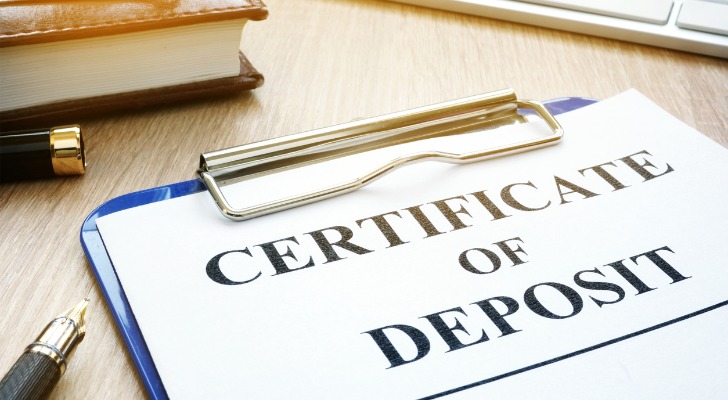

Direct deposit is a convenient way to receive paychecks, tax refunds and other payments. But can you direct deposit into a savings account or do you have to use a checking account? Banks often allow you to schedule direct deposit payments into a savings account and there are some good reasons to consider doing so. Setting up direct deposits to a savings account is easy to do and takes just a few minutes. You can work directly with a financial advisor who can help you create a financial plan and give you recommendations on where to put your money.
Direct deposit is the process of depositing money into a bank account electronically. Instead of sending a paper check, payers can transfer money directly from their bank account to yours. Direct deposit is used to send a number of payment types, including:
The chief benefit of direct deposit is convenience. Depending on which bank you use, you may be able to get paid via direct deposit up to two days earlier. If you get paid on a Friday, for example, the money might be in your account Wednesday evening.
Direct deposits mean less wait time to receive payments and have them credited to your account. With a paper check, on the other hand, you might be waiting a few business days for the check to clear before you can use the money.
Yes, you can set up a direct deposit into a savings account. For example, if you’d like your tax refund to go straight to savings you can tell the IRS or your state tax agency to send the money to your savings account. You can also split direct deposit payments between multiple bank accounts.
For example, say you want to start an automatic savings plan to grow your emergency fund. Your regular paycheck is $1,200 a week. If your employer offers direct deposit, you can note on your enrollment form that you’d like $1,000 to go to your checking account and $200 to go to your savings account.
Using direct deposit for a savings account can be a smart way to grow your money with minimal effort. Having money deposited right out of your paychecks, for instance, removes the temptation to spend it before it can reach your savings account. And scheduling direct deposit for tax refunds or rebates can give your savings an instant boost.

Direct deposit offers flexibility since you can decide whether to send money to a checking account or a savings account. But it doesn’t have to be an either/or decision. Instead, you can pick and choose what to direct deposit into each account.
As mentioned, in the previous example, you could send the bulk of your paycheck to a checking account to cover monthly bills and spending while putting a smaller amount into savings. If you’re receiving government benefits, you may also choose to split those direct deposit payments between checking and savings.
Deciding how much of your direct deposit to allocate to checking or savings can depend on your financial situation and goals. The money you keep in checking is money you plan to spend, whether it’s to pay bills, buy groceries or cover other expenses. And it’s important to keep a cushion in checking so you don’t run the risk of triggering overdraft fees.
Savings, on the other hand, are the money that you don’t necessarily plan to spend right away. You might have one savings account for your emergency fund, savings account to hold sinking funds and separate savings accounts for short- and long-term financial goals. You can use direct deposit to fund each account instead of scheduling individual transfers from checking to savings.
If you’d like to set up a direct deposit into a savings account, there are a few pieces of information you’ll need:
The process for setting up direct deposit into savings can depend on where you’re doing it. If you’re arranging a direct deposit with your employer, for example, then you’d need to fill out a direct deposit form with the information listed above. Your human resources department or payroll department should be able to provide the form.
If you’re setting up direct deposit somewhere other than your employer, you may be able to do it online. The Social Security Administration (SSA) allows you to enroll in direct deposit to receive your benefits online. You can also enter your savings account information online with the IRS to receive direct deposit for tax refunds, stimulus checks and advance tax credit benefits.
You’ll just need to enter the bank routing number and savings account number. If you don’t know your bank’s routing number or your savings account number, you may be able to look them up through online or mobile banking. If you can’t find your information you can call the bank to ask for the required numbers.
Direct deposit is a safe, secure way to receive payments. As long as you’re dealing with a legitimate payer, then your money should be sent securely. There’s no risk of a paper check being lost or stolen since money is transferred between accounts electronically. And direct deposit can be a faster way to get paid overall.
You do have to provide the payer with your bank account number and routing number but that information is not shared with anyone other than the payer’s bank. There’s little room for error unless you provide the incorrect bank routing number or account number.
That can be a problem if your paycheck or tax refund ends up in someone else’s bank account. For that reason, it’s a good idea to double-check your bank details before submitting a direct deposit request to ensure that everything is correct.

Can you direct deposit into a savings account? Yes, and doing so could be a straightforward way to grow your savings balance. Before setting up direct deposit to savings, you may want to take a look at your budget first. That can give you an idea of how much of your paychecks you can afford to add to your savings.
©iStock.com/fizkes, ©iStock.com/Ridofranz, ©iStock.com/Adene Sanchez
Rebecca Lake, CEPF®Rebecca Lake is a retirement, investing and estate planning expert who has been writing about personal finance for a decade. Her expertise in the finance niche also extends to home buying, credit cards, banking and small business. She's worked directly with several major financial and insurance brands, including Citibank, Discover and AIG and her writing has appeared online at U.S. News and World Report, CreditCards.com and Investopedia. Rebecca is a graduate of the University of South Carolina and she also attended Charleston Southern University as a graduate student. Originally from central Virginia, she now lives on the North Carolina coast along with her two children. Rebecca also holds the Certified Educator in Personal Finance (CEPF®) designation.
Read More About Checking Account



More from SmartAsset
SmartAsset Advisors, LLC ("SmartAsset"), a wholly owned subsidiary of Financial Insight Technology, is registered with the U.S. Securities and Exchange Commission as an investment adviser. SmartAsset's services are limited to referring users to third party advisers registered or chartered as fiduciaries ("Adviser(s)") with a regulatory body in the United States that have elected to participate in our matching platform based on information gathered from users through our online questionnaire. SmartAsset receives compensation from Advisers for our services. SmartAsset does not review the ongoing performance of any Adviser, participate in the management of any user's account by an Adviser or provide advice regarding specific investments.
We do not manage client funds or hold custody of assets, we help users connect with relevant financial advisors.
This is not an offer to buy or sell any security or interest. All investing involves risk, including loss of principal. Working with an adviser may come with potential downsides such as payment of fees (which will reduce returns). There are no guarantees that working with an adviser will yield positive returns. The existence of a fiduciary duty does not prevent the rise of potential conflicts of interest.